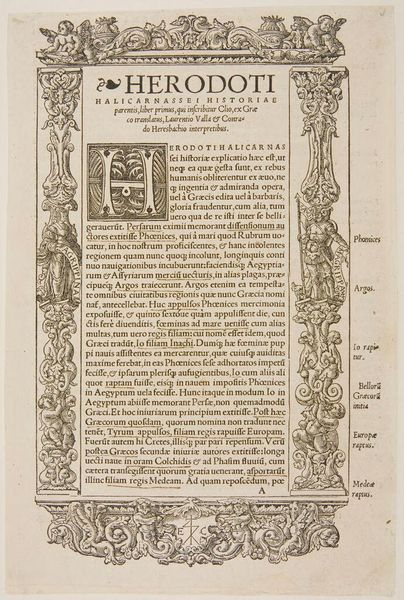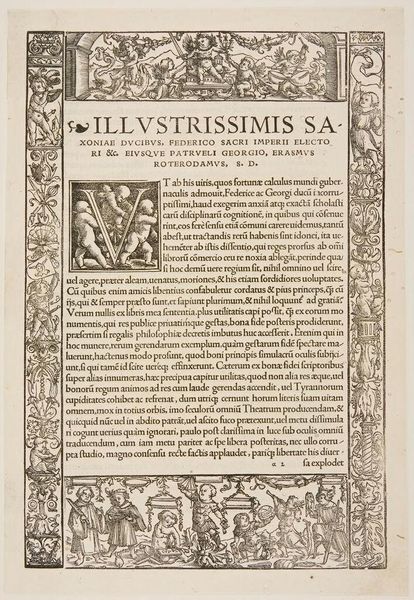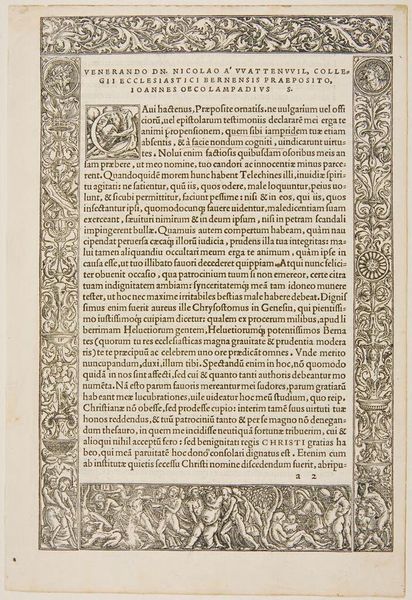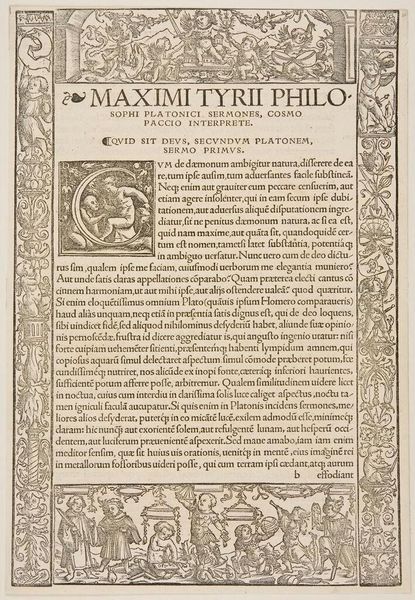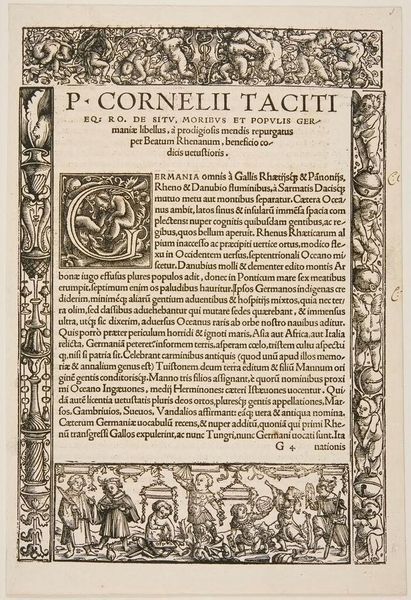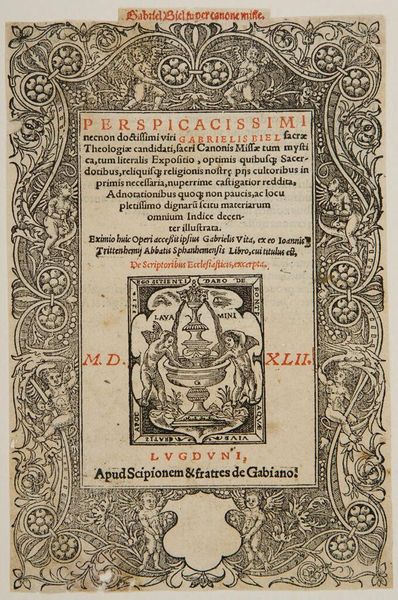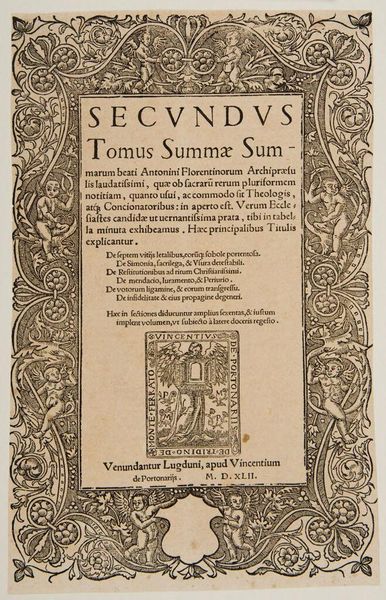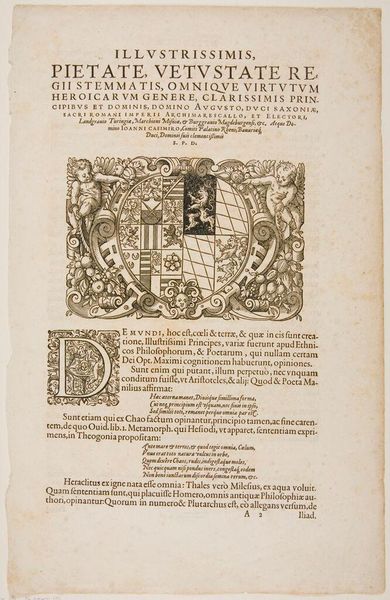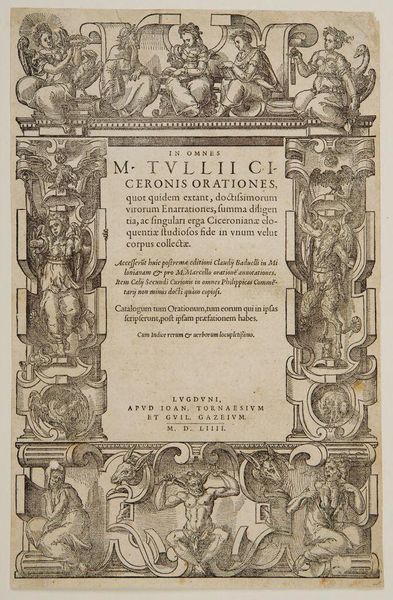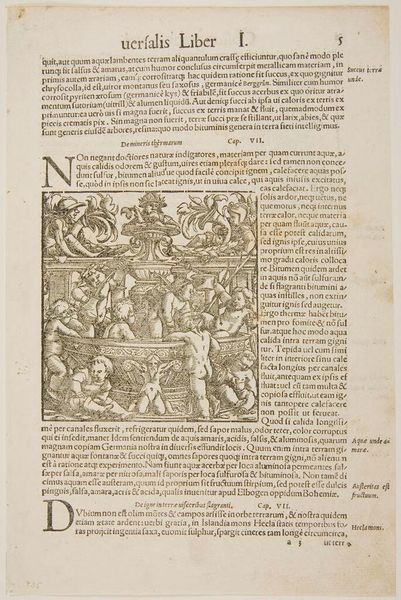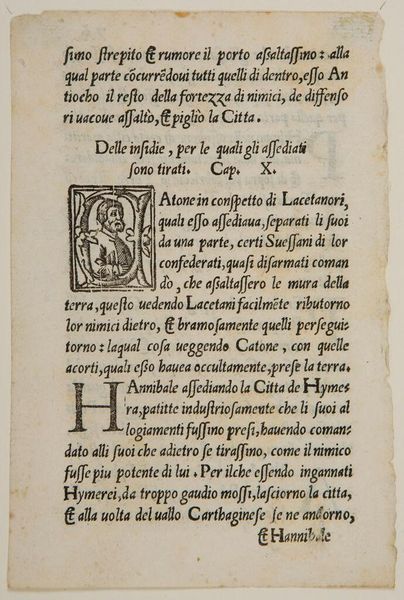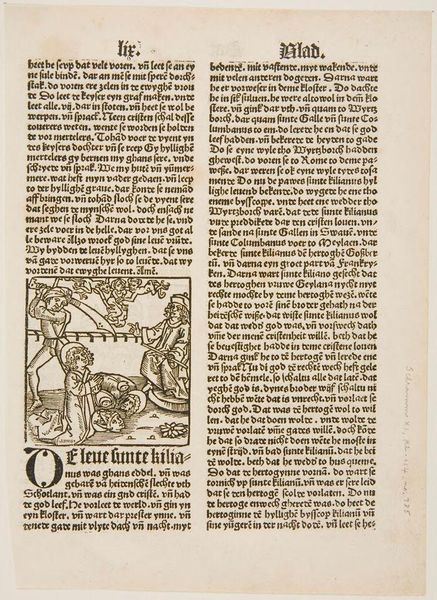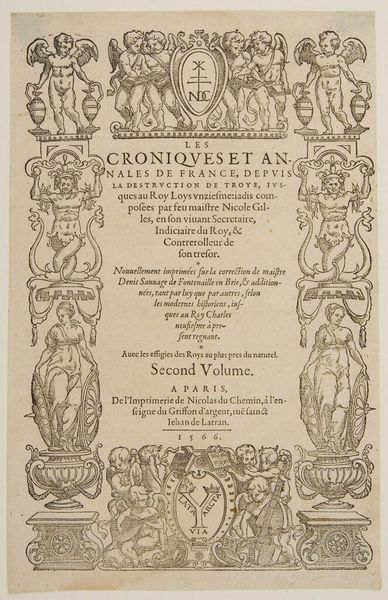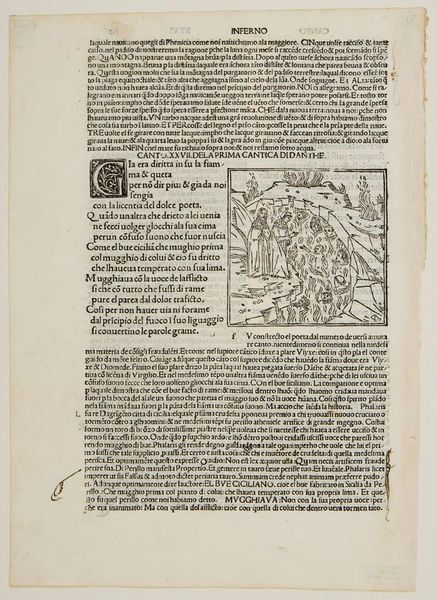
Copyright: CC0 1.0
Curator: This is a print by Hans Holbein the Younger, titled “Copy: Border of the Table of Cebes.” It is currently held in the collections of the Harvard Art Museums. Editor: It's incredibly detailed! My initial reaction is a sense of being overwhelmed. There's so much going on within that border. Curator: Yes, Holbein's known for his detail. The border surrounds a central text, and is packed with miniature scenes. It seems to be a commentary on morality and virtue, judging by the figures and narratives depicted. Editor: It does feel didactic. Knowing Holbein’s context, I wonder about the power dynamics represented here. Are these accessible allegories, or are they intended to reinforce specific social hierarchies? Curator: That's a good question. Holbein operated within a world of religious and political upheaval, so his art often served multiple purposes. It could be decorative, moralizing, and even subtly subversive. Editor: Exactly! And given the period, I think it's important to consider whose morals and virtues are being promoted and at whose expense. There is always a political agenda behind these images. Curator: A crucial point to keep in mind as we analyze these older works. Editor: Absolutely. These images are a reminder that art and power are always intertwined, whether we acknowledge it or not.
Comments
No comments
Be the first to comment and join the conversation on the ultimate creative platform.
